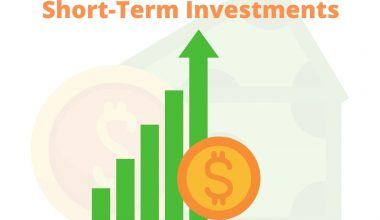In the intricate maze of investment, two paths often stand out, beckoning investors with their distinct philosophies: active and passive investing. While both aim for financial growth, their approaches diverge significantly. Active investing is akin to a hands-on journey, with investors or their managers making deliberate choices, hoping to outpace the market. On the other hand, passive investing takes a backseat, mirroring market indices and embracing the market’s natural ebb and flow. As we delve deeper into these strategies, it’s essential to understand their nuances, benefits, and potential pitfalls. This article sets the stage for an enlightening exploration of these two dominant investment paradigms.
Active Investing Unveiled
In the dynamic world of investments, active investing stands out as a proactive approach, where every decision aims to outperform the market or a specific benchmark. It’s a strategy that many investors, from stock enthusiasts to those delving into REIT investing for beginners, often consider as their initial step. At the heart of this method are financial managers and analysts. With their deep market insights, research, and expertise, they navigate the investment landscape, making timely buy, hold, or sell decisions. Their role is pivotal, ensuring that the investment strategy aligns with the ever-evolving market trends and opportunities.
Passive Investing Demystified
Contrasting the active approach, passive investing is about aligning with the market’s rhythm. Investors here typically lean towards index funds or Exchange Traded Funds (ETFs) that emulate a particular market index. The essence of passive investing is not about outpacing the market, but rather moving in tandem with it. By doing so, investors embrace the market’s long-term growth trajectory, benefiting from diversification and often enjoying lower fees. It’s a strategy that resonates with those seeking a more predictable and hands-off investment journey.
Costs and Fees: A Comparative Analysis

In the investment realm, costs and fees play a pivotal role in shaping an investor’s net returns. Both active and passive strategies come with their own set of expenses, and understanding these is paramount for informed decision-making.
Active investing, with its hands-on approach, often incurs higher costs. Fund managers, with their teams of analysts, delve deep into market research, stock-picking, and frequent trading. All these activities come at a price, leading to higher expense ratios for actively managed funds. While these fees might seem nominal at first glance, over time, they can significantly erode potential returns, especially if the fund doesn’t consistently outperform its benchmark.
Conversely, passive investing, with its goal to mirror a market index, typically has lower operational costs. There’s no need for intensive research or frequent trading decisions. As a result, passive funds generally boast lower expense ratios. However, it’s essential to note that even small fees can compound over time, impacting long-term investment growth.
When evaluating costs, investors must look beyond just the immediate expense ratios. The long-term financial implications, when compounded over years or even decades, can be substantial. It’s crucial to weigh the potential returns against these costs to gauge the true value of an investment strategy.
Performance Metrics: Which Strategy Triumphs?
The age-old debate in the investment community has often revolved around performance. Which strategy, active or passive, offers superior returns? Historically, the answer isn’t clear-cut. Some actively managed funds have indeed outperformed their benchmarks, delivering stellar returns for their investors. These funds, backed by astute managers, have navigated market volatilities, capitalized on opportunities, and offered value that surpasses their fees. However, it’s crucial to note that such consistent outperformance is rare. Many active funds struggle to beat their benchmarks, especially after accounting for their higher fees.
On the other hand, passive funds aim not to outperform but to replicate the market. Over long periods, markets have shown a general upward trend. Passive funds, with their lower fees, have often delivered competitive net returns, especially when viewed over extended periods.
The debate on consistent outperformance is ongoing. While some years might favor active managers, other periods see passive funds taking the lead. For investors, the key lies in understanding their own financial goals, risk tolerance, and investment horizon. Performance metrics are essential, but they are just one piece of the larger investment puzzle.
Every investment strategy, whether active or passive, brings with it a unique set of risks and rewards. For active investors, the risks often lie in the choices made by the fund managers. A wrong bet on a particular stock or sector can lead to significant losses. Additionally, the higher fees associated with active management can eat into potential profits. However, the rewards can be substantial if the manager’s predictions and strategies align with market movements, leading to returns that outpace the market.
On the flip side, passive investing, while generally perceived as safer, isn’t without its risks. Market downturns will directly impact passive investments since they mirror the market’s performance. But the silver lining here is the lower fees and the historical resilience and growth of markets over long periods. The rewards of passive investing lie in its simplicity, lower costs, and the potential for steady, long-term gains.
Making the Choice: Factors to Consider
Choosing between active and passive investing is a decision that should align with an investor’s personal goals, financial situation, and risk tolerance. Those with a higher risk appetite and a desire for potentially higher returns might lean towards active investing. They might be comfortable with the idea of riding the market’s highs and lows, banking on expert insights to navigate the investment journey.
Conversely, investors who prioritize stability, long-term growth, and are wary of market volatility might find solace in passive investing. This strategy allows them to tap into the broader market’s growth without the stress of constantly monitoring and making decisions.
Beyond these considerations, diversification remains a cornerstone of sound investment. Whether one chooses an active or passive strategy, ensuring a well-balanced portfolio spread across sectors, asset classes, and even geographies can mitigate risks and enhance potential rewards.
Conclusion: Crafting Your Investment Blueprint
The journey through the realms of active and passive investing offers valuable insights into the diverse strategies available to investors. While each approach has its merits and drawbacks, the crux of successful investing lies in understanding one’s financial goals, risk appetite, and the market landscape. As we wrap up this exploration, it’s evident that there’s no one-size-fits-all answer. The best investment strategy is a personalized blueprint, crafted with care, research, and foresight. Investors are encouraged to continually educate themselves, seek expert advice when needed, and remain adaptable to the ever-evolving financial world. In doing so, they can make informed decisions that resonate with their unique financial aspirations and goals.






